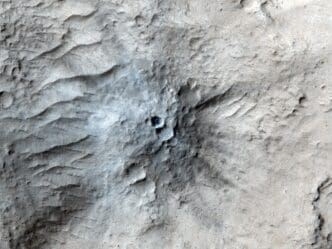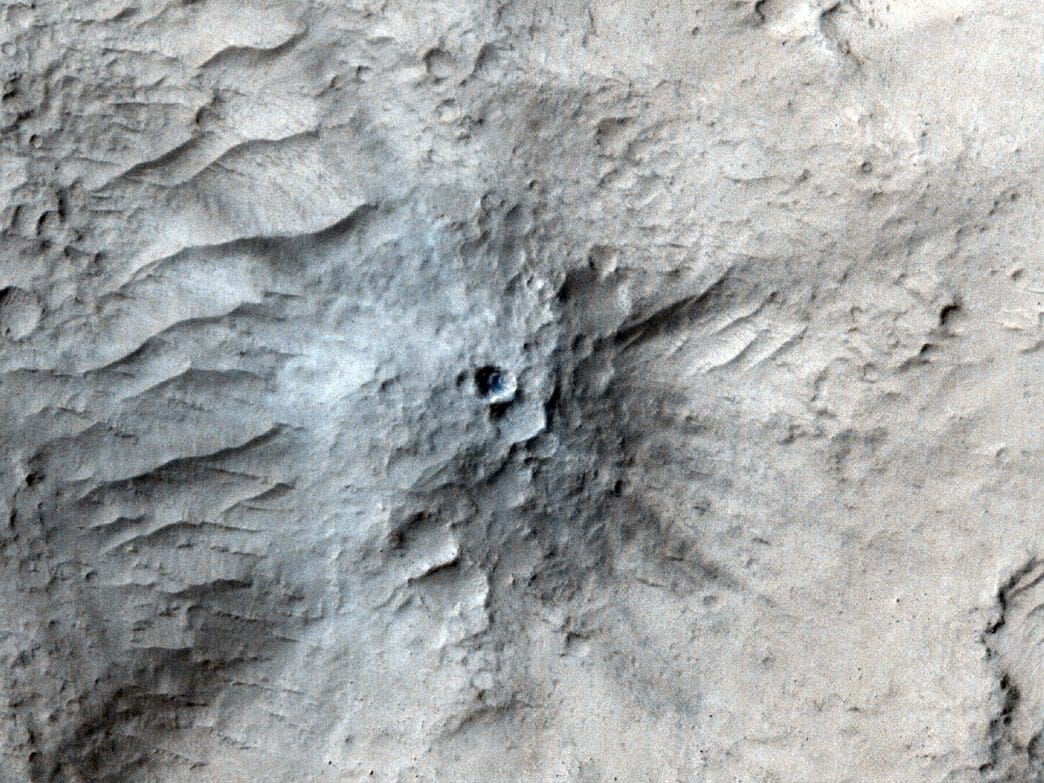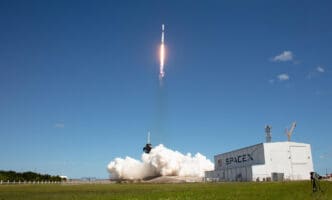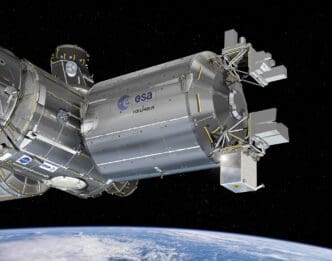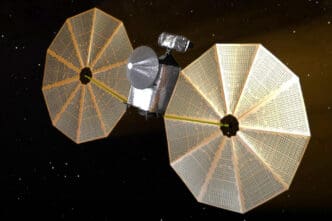Get ready to embark on a galactic journey as NASA’s InSight mission uncovers some startling revelations about Mars. With the help of advanced AI and a keen eye for detail, scientists have unearthed fresh craters and deep-seated marsquakes. Intrigued yet? Let’s dive into the seismic story of Mars!
Hold onto your helmets! It turns out that meteoroids striking Mars create waves that penetrate deeper into the planet than previously imagined. NASA’s InSight mission, though retired, has left behind a wealth of data that continues to unveil secrets about the Red Planet’s geological mysteries. From quakes to craters, there’s a lot more to Mars than meets the eye.
Uncovering Mars’ Deep Secrets
NASA’s InSight mission has peeled back layers of Martian secrets, revealing unexpected depths beneath the surface. With the use of AI and sharp imagery from the Mars Reconnaissance Orbiter, scientists tracked down fresh craters linked to meteoroid impacts. Not only have these revelations reshaped our understanding, but they also showcase the leaps in Martian exploration.
At the heart of this discovery is the seismic energy that plunges deeper than scientists anticipated, transporting us to a previously hidden domain of geological activity. This offers insights into the planet’s composition and its ability to transport seismic waves further than previously thought. These waves play a crucial role in revealing Mars’s dynamic geological processes.
The Role of AI in Martian Exploration
Thanks to machine learning, the task of sorting through countless images has been revolutionized. NASA’s Jet Propulsion Laboratory has harnessed AI to pinpoint Mars’ meteoroid impacts. AI narrows down tens of thousands of images to a select few that demand closer inspection.
This technological marvel, though not flawless, outpaces traditional methods by a significant margin. Scientists bank on AI to quicken the pace of identifying new craters, allowing for faster analysis and more accurate conclusions about Mars’ seismic activity. With AI at the helm, the big data era of planetary science is here.
Decoding Seismic Signals
Understanding seismic signals from Mars is like deciphering a cosmic Morse code. Scientists differentiate between quakes originating deep within the planet and those triggered by meteoroid strikes, thanks to InSight’s data.
The Cerberus Fossae region, known for its quaky nature, has provided a rich dataset. Initially, researchers believed it generated high-frequency seismic signals from internal quakes. However, recent discoveries indicate that some of these signals might be due to surface impacts, altering previous assumptions.
Delving further into the data, researchers enhance their ability to distinguish between different types of seismic activities. This refinement in interpretation helps in painting a more detailed picture of Mars’ internal and surface dynamics. AI tools are also employed for Earth’s Moon, indicating a combined effort in otherworldly studies.
InSight’s Legacy
InSight’s success lies in its ability to provide unprecedented insights into Mars’ interior. As a key part of NASA’s Discovery Program, it introduced us to Mars’ hidden seismic activity.
Developed by Lockheed Martin Space, with investment from international partners, InSight’s mission extends beyond U.S. borders. Instruments like the Seismic Experiment for Interior Structure from France and others highlight the collaborative nature of this mission.
InSight has surpassed expectations, braving the Red Planet’s harsh conditions and contributing invaluable data to scientists and engineers worldwide.
Refining Marsquake Analysis
The discovery of deep-reaching marsquakes has pushed scientists to revisit their models of seismic activity on Mars.
The unusual depth of seismic waves following impact suggests a more direct route through the Martian mantle. This opens avenues to reassess theories about Mars’ internal structure.
Researchers previously thought the Martian crust absorbed much seismic energy, limiting wave travel to shallower depths. This breakthrough is likened to discovering a seismic freeway through the mantle.
AI: The Data Streamliner
AI’s role extends beyond Mars, reaching the Moon. Researchers identify features like landslides and dust devils with these cutting-edge tools. This transforms planetary science, allowing more efficient data processing.
Despite its speed, AI isn’t foolproof. Scientists supplement AI findings with human analysis to refine results further. Like a cosmic detective, AI sifts through planetary clues, corroborated by human experts.
The integration of AI in deciphering planetary data marks a pivotal point in space exploration. Its influence spans agencies and missions, benefiting NASA and beyond.
The Future of Martian Exploration
As missions like InSight conclude, they leave an enduring legacy prompting further Mars exploration endeavors.
Upcoming missions may draw lessons from InSight, focusing on unmanned and manned explorations. The data gathered helps calibrate instruments, paving the way for future probes.
Mars’ vast terrains remain largely unexplored. Emerging technologies promise to peel back more of the planet’s secrets, gradually revealing the complexities of our neighboring celestial body.
Collaborative Contributions
The advancement of space missions rests on global collaboration, as seen in InSight’s international partnerships.
European agencies contributed significantly to the mission’s success, providing specialized instruments and expertise.
These partnerships exemplify the power of combining resources to explore the cosmos, showcasing a unified quest for knowledge.
From Mars to the Moon
The methodologies from Mars exploration pave the way for lunar studies.
Researchers apply Mars-tested techniques to uncover lunar mysteries. From craters to seismic activity, these approaches foster understanding beyond Earth.
The cross-application of these methods emphasizes the potential for universal scientific exploration, broadening the horizons of knowledge.
InSight’s contributions reach far into the cosmos, unraveling Mars’ secrets and setting the stage for future missions. Its legacy of discovery and collaboration continues to inspire both scientific inquiry and exploration.

